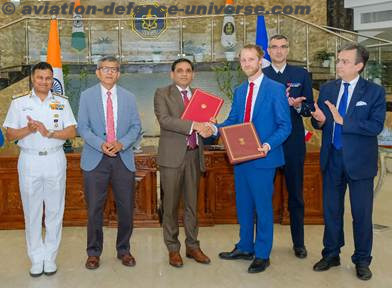- Eighth order confirms success of Eurostar Neo for GEO market 26th satellite ordered by Eutelsat from Airbus

Paris. 22 March 2021. Airbus has been selected by Eutelsat, one of the world’s leading satellite operators, to build EUTELSAT 36D, a new generation multi-mission geostationary telecommunications satellite.
The EUTELSAT 36D spacecraft will replace and enhance capacity at 36°East, a key orbital slot for Eutelsat for TV broadcasting (DTH) and government services over Africa, Russia, and Europe.
It will be the eighth satellite based on the-state-of-the-art Airbus Eurostar Neo platform, a significant evolution of the highly reliable and successful Eurostar series with an entire range of major innovations.
Eurostar Neo combines increased payload capacity and more efficient power and thermal control systems with reduced production time and optimised costs, as part of a fully digitalised production process.
With 70 Ku-band transponders over five downlink beams and a steerable antenna, EUTELSAT 36D provides flexibility and performance optimisation to deliver service in Africa, Russia and Europe.
“This eighth contract for a Eurostar Neo further endorses our strategy of continually pioneering new technologies to better serve our customers’ needs. We are delighted to help Eutelsat provide broadcast and data connectivity, including to remote regions where it’s needed most. More personally, the continuing confidence of Eutelsat in our products is high praise of the reliability of our work and a source of pride for all of our skilled teams,” said François Gaullier, head of Telecom Systems at Airbus.
Due for launch in the first half of 2024, EUTELSAT 36D combines electric power of 18 kW with a reduced launch mass of 5 tons, enabled by Airbus’ EOR (Electric Orbit Raising) capability. It will have an operational lifetime of more than 15 years.
EUTELSAT 36D is the 26th Airbus satellite ordered by Eutelsat and it reinforces Airbus’ position as the world’s number one in electric propulsion satellites, with four full electric satellites operational in orbit and 17 additional full electric high-capacity telecommunications satellites under construction.
































































































































